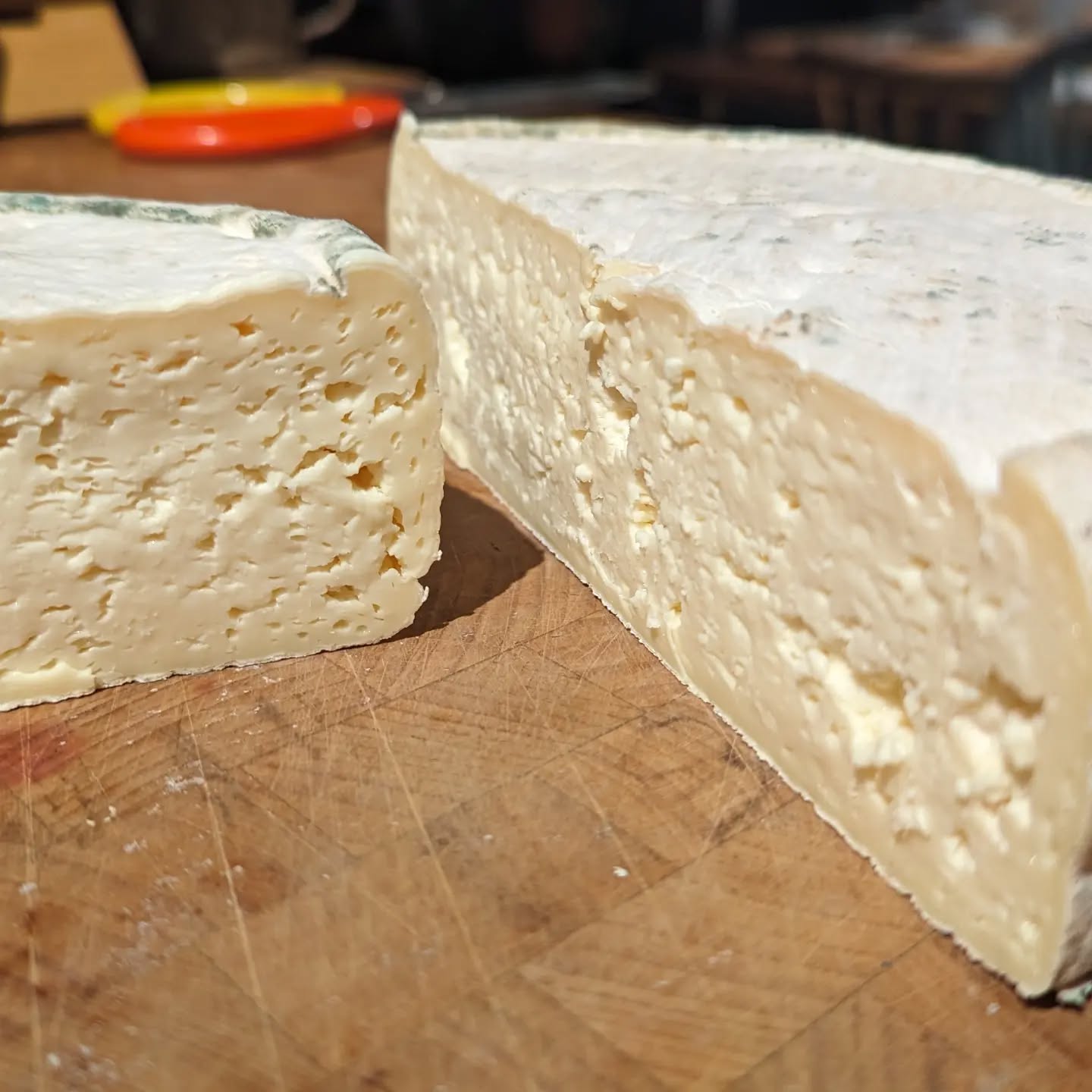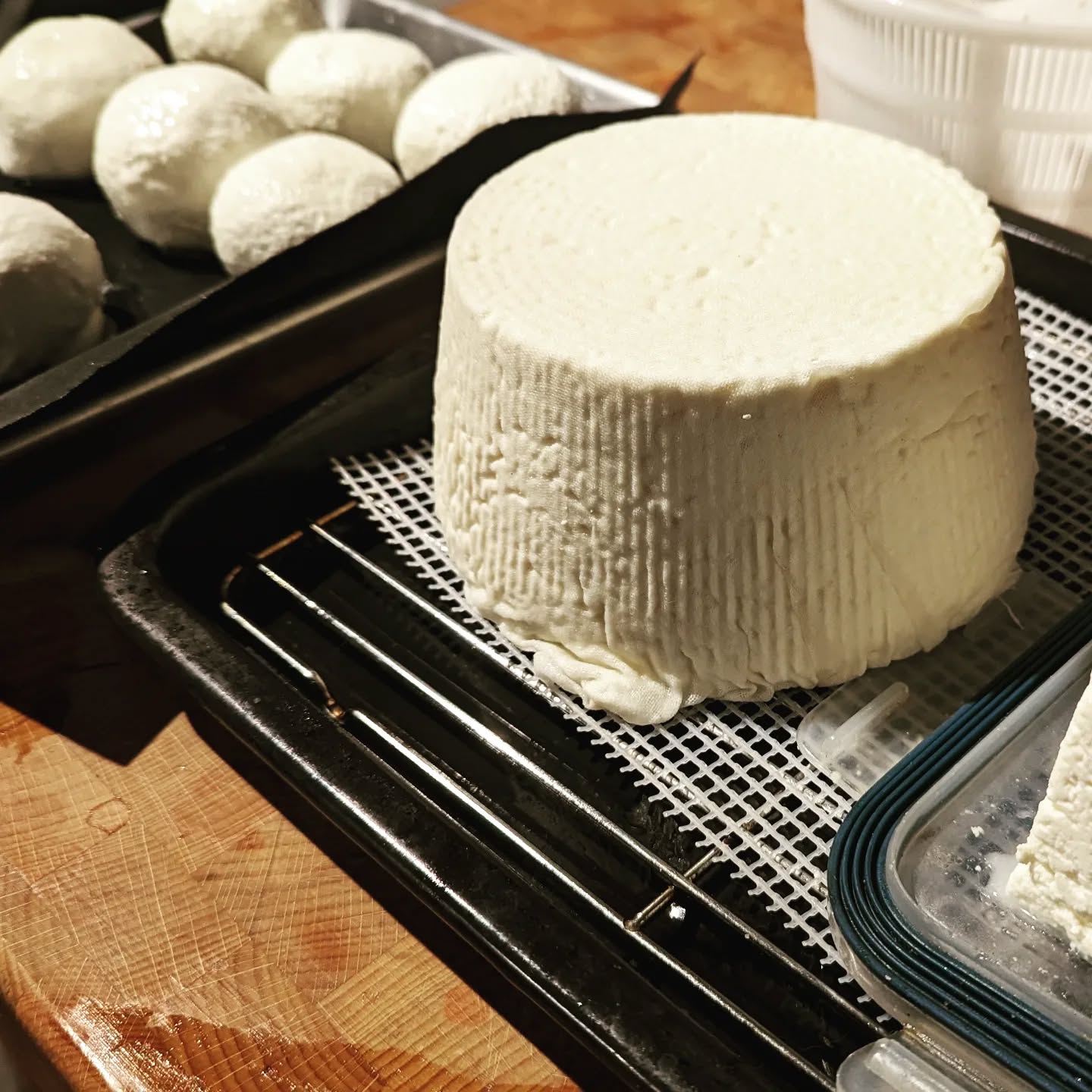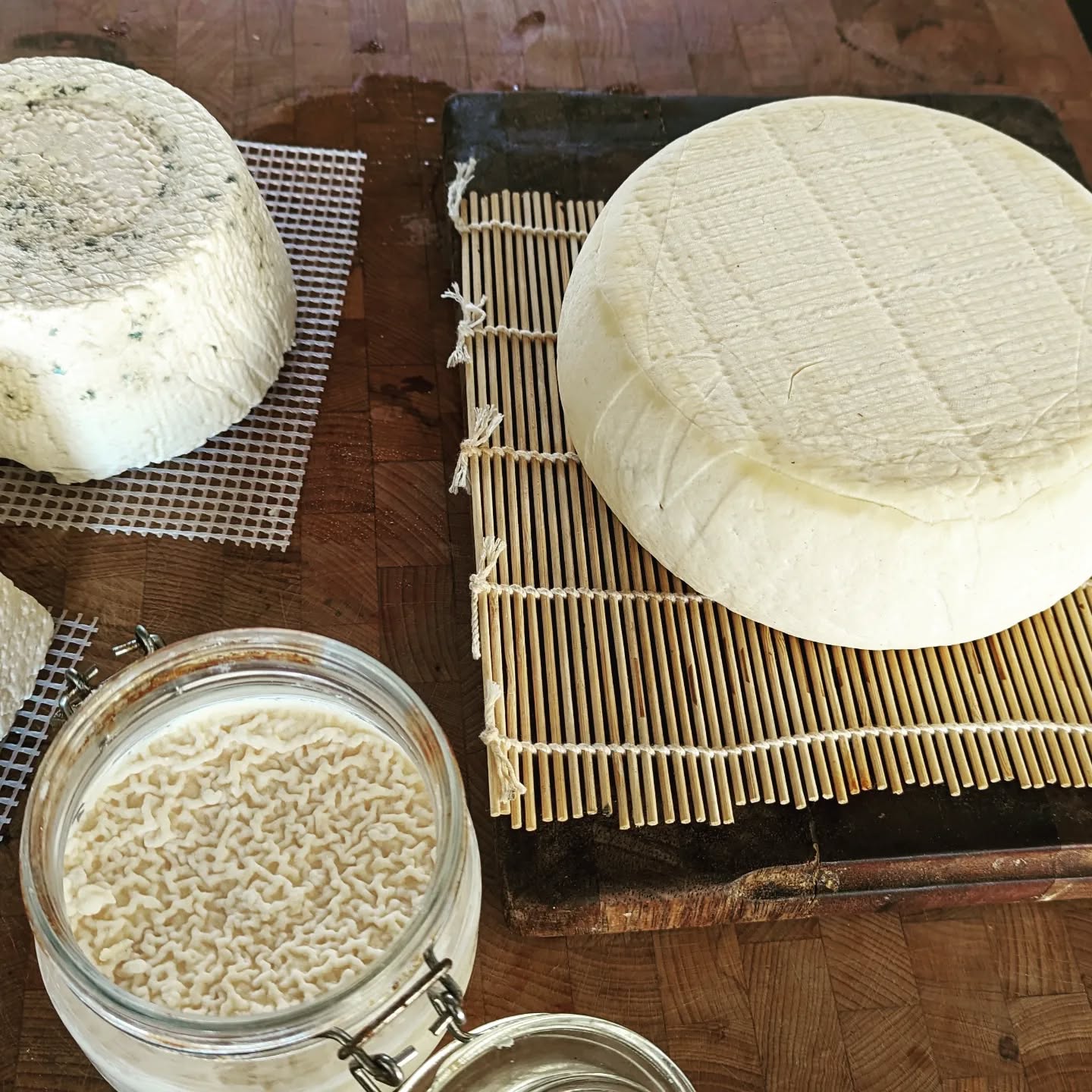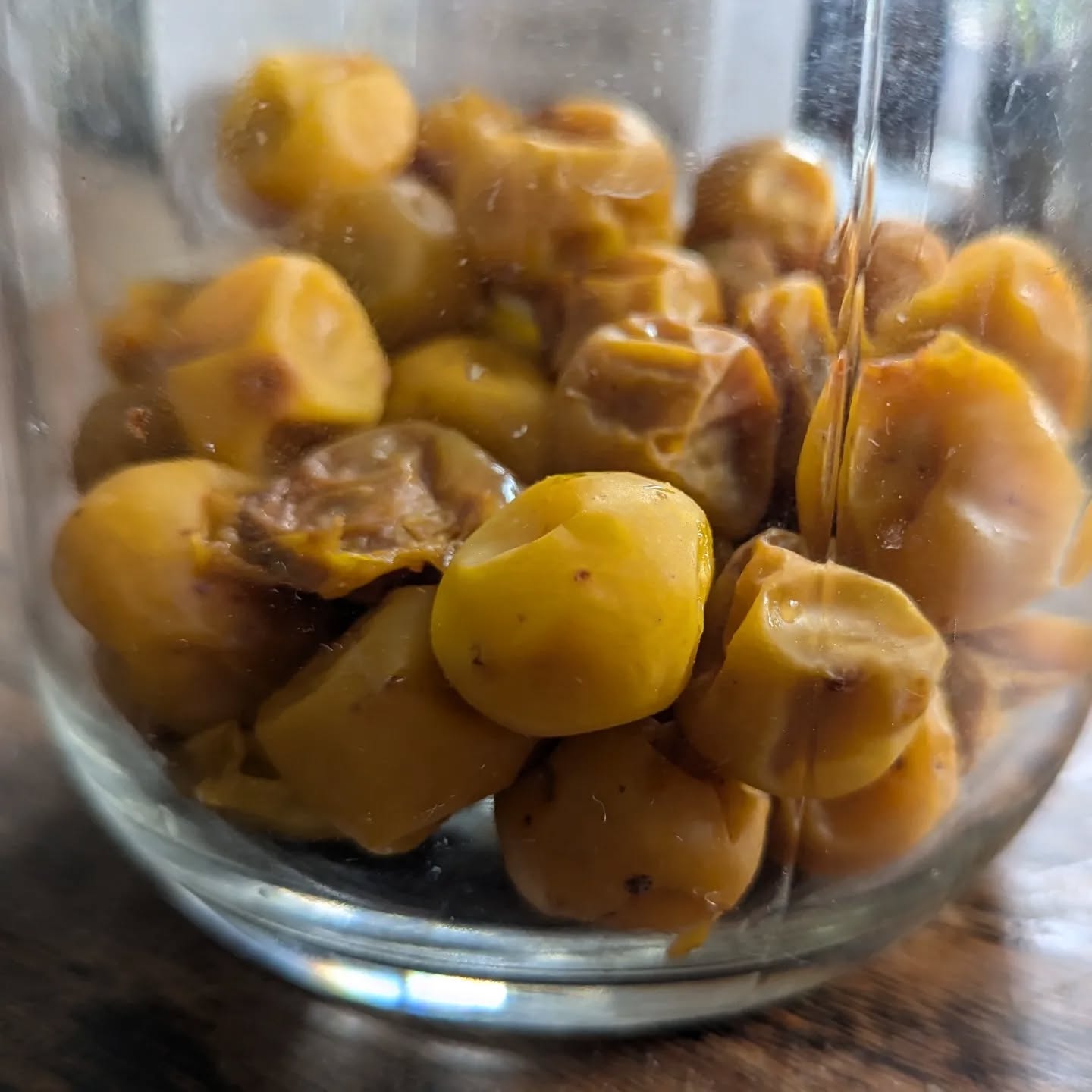· James Torr · Personal · 1 min read
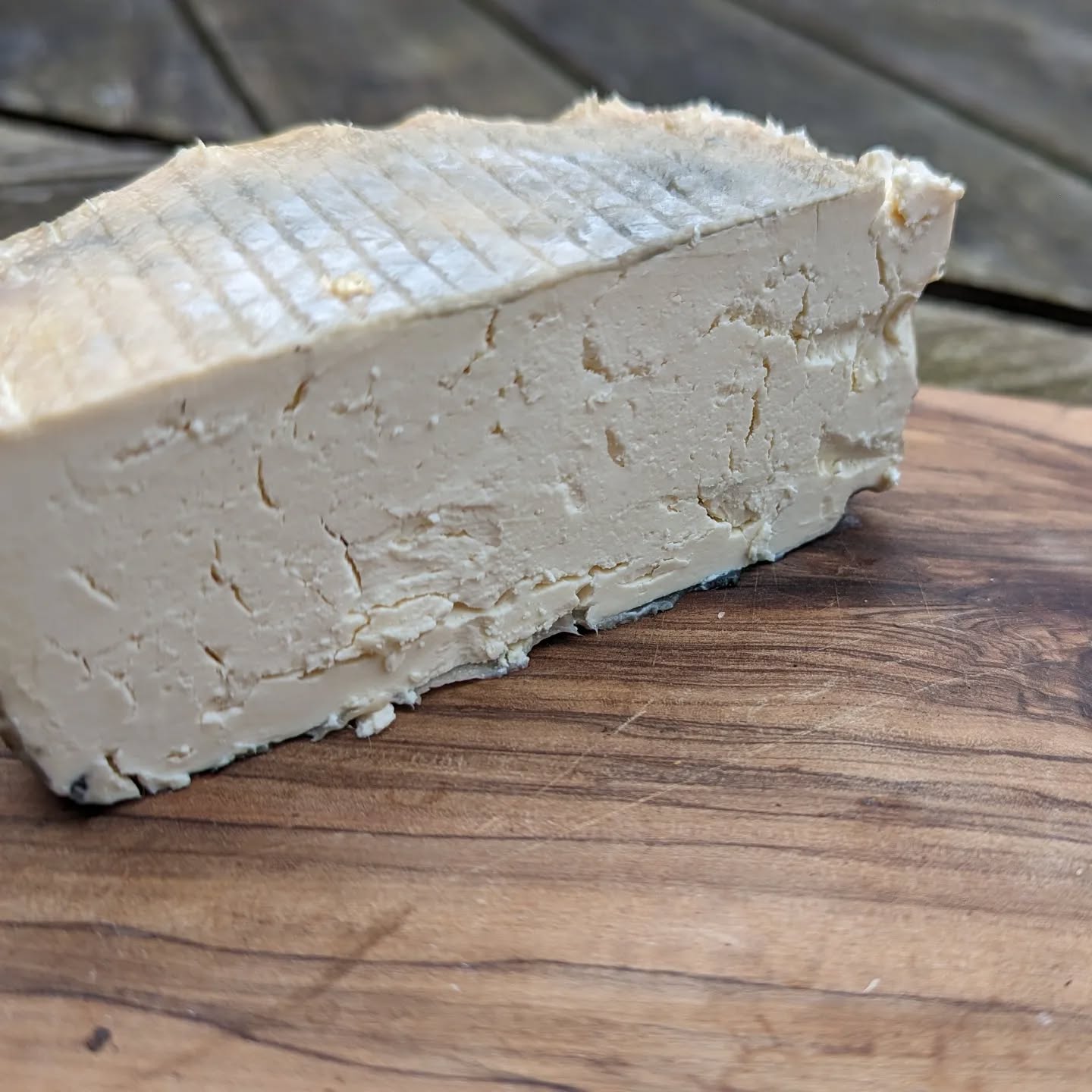
Cheese unveil.
Cheese unveil. This is a washed-rind aged ricotta, which isn’t really a thing, just something I made. Ricotta isn’t usually aged due to the fact that most of the bugs and enzymes are killed due to it being nearly boiled. However, I wanted to try it, and added some back in after the curds had cooled down. I also ended up washing with some brined whey, basically brushing some on during the early ageing process. This kills some of the bugs but not all of them, resulting in this orange coloured rind. Washed rind cheeses are often a bit stinky, and this is no exception, in fact probably a bit too intense for my nose.
It’s quite incredible that the ricotta industry exists as well. I used about 18 litres of whey to produce maybe 700g of whey cheese, nearly boiling the whey in the process. That’s a lot of energy going into making this product. I think the majority of “ricottas” are made from curds, I’ve certainly seen a few recipes.
